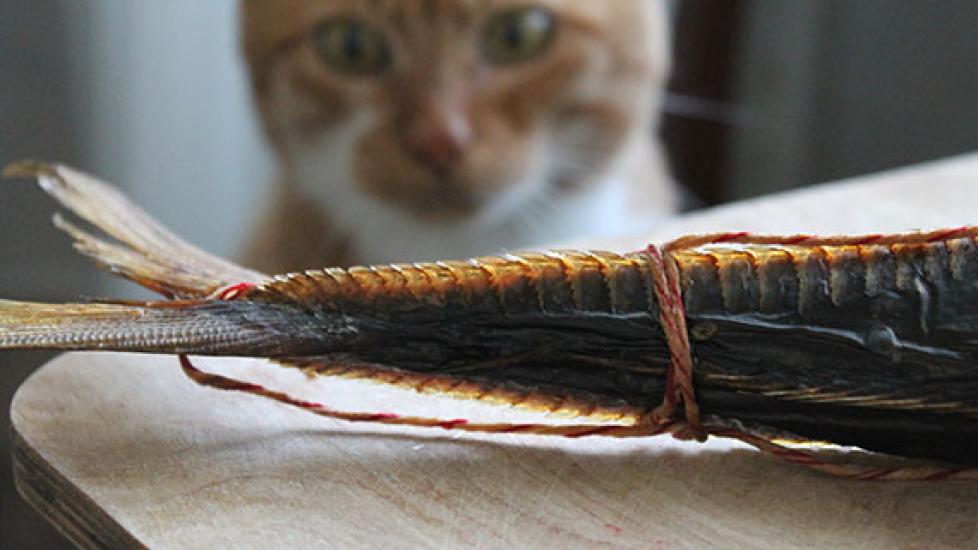Are Fish Flavored Cat Foods Causing Hyperthyroidism?
I am all too familiar with hyperthyroidism. It is one of the most common endocrine (hormonal) diseases of cats. I’ve diagnosed many of my patients with the condition, including two of my own cats.
First some background. Hyperthyroidism is a usually caused by a benign tumor within the thyroid gland that secretes large amounts of thyroid hormone. One of the primary functions of this hormone is to regulate an animal’s metabolism. Cats under the influence of too much thyroid hormone have a greatly increased metabolic rate, leading to the classic symptom of weight loss despite a ravenous appetite. Elevated thyroid hormone levels can also lead to high blood pressure, a type of heart disease called hypertrophic cardiomyopathy, vomiting, diarrhea, and increased thirst and urination.
In most cases, hyperthyroidism can be diagnosed when a cat has high circulating levels of thyroid hormone (total T4 or TT4) in conjunction with typical clinical signs. Additional forms of thyroid testing may be necessary in complicated cases. Treatment varies depending on the cat’s overall health and owner finances, but options include radioactive iodine therapy, daily medication, a low-iodine diet, and surgical removal of the thyroid gland.
While diagnosing and treating hyperthyroidism is relatively straightforward, identifying the disease’s cause is not. Theories abound, some of which have scientific research to back them up. Hyperthyroidism has been connected to canned cat food (perhaps because the lining of the cans contains bisphenol A – BPA) and exposure to flame retardant chemicals (polybrominated diphenyl ethers – PBDEs) used in furniture, electronics, and other consumer products.
Another possible risk factor is fish flavored food cat food. A study published in 2000 looked at the medical records of 100 cats with hyperthyroidism and 163 control cats (cats without hyperthyroidism) to determine whether or not a number of environmental or dietary factors played a role in which cats became hyperthyroid. The researchers found that “exposure to fertilizers, herbicides, or plant pesticides; regular use of flea products; and presence of a smoker in the home were not significantly associated with an increased risk of disease, but cats that preferred fish or liver and giblets flavors of canned cat food had an increased risk.”
And now more evidence points to problems with fish flavored foods. A 2016 study that evaluated feline blood samples and cat food found that the type of polychlorinated biphenyls (PCBs) and polybrominated diphenyl ethers (PBDEs) derivatives found in the cat food and cat blood came from “marine organisms.” Additionally, they were able to show just how feline physiology could convert the type of chemical present in the food into the sort that was found in the cats’ blood.
These papers aren’t definitive so I don’t recommend that we all immediately throw out our fish flavored foods or panic if that’s all our cats will eat, but the next bag I buy will probably be chicken rather than fish flavored.

Dr. Jennifer Coates
References
Evaluation of dietary and environmental risk factors for hyperthyroidism in cats. Martin KM, Rossing MA, Ryland LM, DiGiacomo RF, Freitag WA. J Am Vet Med Assoc. 2000 Sep 15;217(6):853-6.
Organohalogen Compounds in Pet Dog and Cat: Do Pets Biotransform Natural Brominated Products in Food to Harmful Hydroxlated Substances? Mizukawa H, Nomiyama K, Nakatsu S, Iwata H, Yoo J, Kubota A, Yamamoto M, Ishizuka M, Ikenaka Y, Nakayama SM, Kunisue T, Tanabe S. Environ Sci Technol. 2016 Jan 5;50(1):444-52.
